We first heard about "Project: Pyramid Flipper" back in June 2016. The hybrid 2-in-1 Windows 10 device was being built by Finnish company, Eve, whose previous product, the T1 Windows 8 tablet achieved modest success in 2015.
The upcoming device was very intriguing for two main reasons: firstly, it's the first "crowd-developed" computer to hit the market, and secondly, Eve's CEO jokingly described the machine to me as a "Surface killer". Granted, these could both have been publicity stunts and the device would have turned out to be nothing more than vaporware - especially after it achieved its $75,000 Indiegogo funding goal in less than an hour - fast forward to 2017, and we finally have the actual product, now dubbed "Eve V", in our hands.

The Eve V comes in a black rectangular cardboard box, which feels very sturdy with the weight uniformly balanced across the packaging. While the design is minimal, it does look extremely slick and premium, although it is prone to catching fingerprints and dust pretty easily as is apparent from the photos.

Opening the box reveals the names of over 1,000 people who helped develop the Eve V on the left flap. Most of these are members of the Eve Community, whose feedback enabled the company to build the device. It's pretty decent shout-out to fans of the device, and can be a great memento who actively participated in the construction and design of the Eve V, but will likely be ignored by other customers.

The right side of the box contains the Eve V unit and its related accessories, which include a 2.5m USB-C cable for charging, the N-Trig Pen, and the charging dock. These are all embedded securely into the foam cut-outs and blend in pretty well with the packaging, but are once again, very prone to catching dust particles.
The specifications of the Eve V review unit that I received are as follows:
| CPU | 1.3GHz (~1.6GHz) Intel Core i7-7Y75 |
|---|---|
| GPU | Intel HD Graphics 615 |
| OS | Windows 10 Home |
| Dimensions | 295.9x205.3x8.9mm, 925g device, 410g keyboard |
| Material | Aluminum (Black color) |
| Display | 12.3-inch IGZO LCD, 2880x1920 resolution, 1:1500 contrast ratio, 400 nits brightness, 100% sRGB, 281ppi |
| Ports | 2xUSB-A 3.0, 1xUSB-C 3.0, 1xThunderbolt 3 USB-C, 1x3.5mm headset jack, 1xMicro SDXC reader |
| Storage | 512GB PCIe SSD |
| RAM | 16GB LPDDR3 |
| Accessories (included) | N-trig pen with 1024 pressure levels, backlit Bluetooth keyboard |
| Cameras | 2MP front, 5MP rear |
| Battery | 48Wh |
| Windows Hello | Fingerprint scanner (embedded in power button) |
| Price | $1,599 (€1,649) |
This one retails for $1,599, but you can also opt for the 1TB SSD version, which is priced at $1,999. However, if you're on a budget, you can also consider the $799 Intel Core m3 variant with 8GB of RAM and a 128GB SSD. Other pricing tiers include the Core i5 / 8GB RAM / 256GB SSD for $1,199, and the Core i5 / 16GB RAM / 512GB SSD for $1,499.

The Eve V unit itself weighs just under 1kg and feels very nice to hold and doesn't slip across the fingertips. It also features an integrated kickstand which can be tilted all the way up to 130 degrees. It sports a decent combination of ports, including USB-A and USB-C. The power button has a fingerprint scanner embedded on it which can be used for additional security with Windows Hello. Setting up the Eve V takes less than 5 minutes, however, it's important to note that the machine comes with Windows 10 version 1703, and isn't upgraded to the Fall Creators Update by default.

Coming to the accessories of the device, the accompanying N-trig Pen with 1024 levels of pressure sensitivity features two buttons on the side. The top one plays the role of the right click in a mouse while the bottom one acts as an eraser. The Pen feels very nice to hold, just like an actual mechanical pen. However, if you're more used to your Surface Pen, you can also use that one with the Eve V. The included Pen can be attached magnetically to the bottom right side of the V.

For the charging dock, there's also a secondary box that comes with the package, containing three differently shaped adapter pins. This is a really nice touch, seeing that the device is shipped internationally and that different regions may have differently-shaped sockets.

Lifting the Eve V unit from its foam cutout reveals yet another layer of foam, under which is the keyboard for the device. This keyboard is very similar to the Surface Type Cover with its Alcantara casing. The keys are nicely spaced, and you may notice that the "V" key is actually an inverted triangle - which is Eve's logo - and that the backspace key features the "oops!" text. This has likely been done to give the keyboard more of a personal touch. It's important to note that the keyboard is backlit, and looks extremely slick in reduced lighting. While it can be magnetically attached to the V using the pogo pin slot, it can also be used as a Bluetooth keyboard.

This wraps up the main packaging of the device. However, there are some other minor accessories of note as well. These include a poster with the words "We Believe" etched prominently across on the front side and the names of people who helped develop the V on the rear, a sticker, a protective fabric covering for the Eve V, and a sheet which lists all the keyboard shortcuts on one side and the setup guide on the other.
All in all, apart from the package's tendency to catch dust and fingerprints, the device is pretty securely packed and gives off very premium vibes - as it should. I'm very excited to be reviewing the first crowd-developed computer, you can check out the full galley below and my detailed review here!




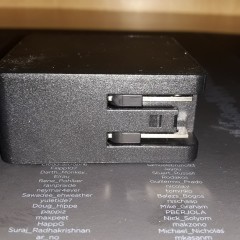
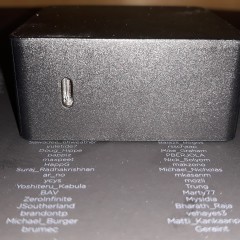
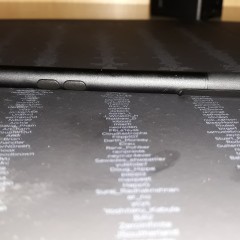



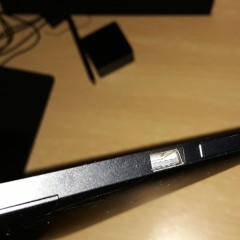
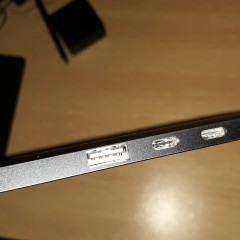
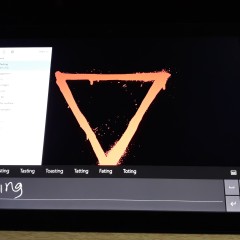




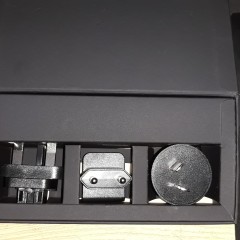




















5 Comments - Add comment